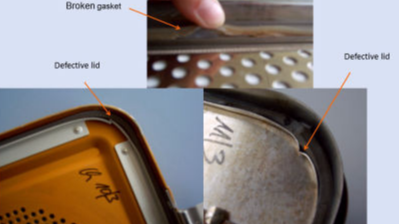
Event-related sterility policy
One recommendation to minimize the risk of non-sterility during a product’s shelf life consists of a careful inspection in order to identify visible failures such as cuts or breaks on gaskets, punctures, tears, wetness, water stains, loosened locks, settled dust following storage on open shelving. Release of the product should be dependent on this visual inspection.